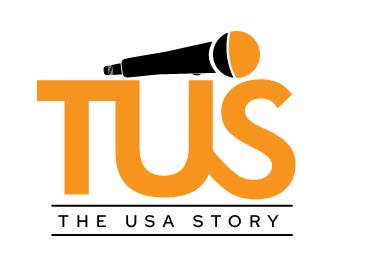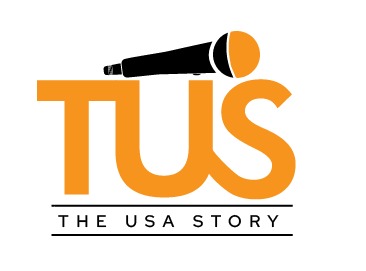Narcan saves lives by quickly reversing the effects of opioids such as heroin or fentanyl. But with xylazine, efforts are slowed.
Overdose-reversal drug Narcan is now allowed without a prescription, but experts are warning it doesn’t work on a common street drug circulating in big cities today called xylazine.
Nearly 25% of fentanyl powder seized in the United States last year was mixed with xylazine, a horse and cattle tranquilizer, according to Drug Enforcement Administration.
Known as the street drug “tranq,” “tranq dope” or “zombie heroin,” xylazine is dangerous because it depresses breathing, lengthens overdoses, and causes skin ulcers and sores that last for months.
Community groups praised the Food and Drug Administration’s move to allow retail sales of Narcan, saying it will help save many lives.
Harm-reduction experts said it’s important to carry naloxone because the vast majority of overdoses involve opioids such as illicit fentanyl or heroin. More than 107,000 people died from overdoses during the 12 months through August 2023, and two-thirds of those deaths involved synthetic opioids.
Still, doctors warn naloxone doesn’t work on xylazine, which is increasingly found in illicit fentanyl and heroin.”Everyone should carry naloxone. Everyone should carry Narcan,” said Kevin Sabet, president and CEO of the Foundation for Drug Policy Solutions. “But society shouldn’t carry the idea that this is going to be the way out of this drug epidemic.”
Where is xylazine found?
Xylazine-laced fentanyl surfaced in Philadelphia and Puerto Rico last decade.
Overdose deaths involving xylazine increased from 2% to 26% in Pennsylvania from 2015 to 2020, according to the National Institute on Drug Abuse. In 2021, about 1 in 5 Maryland overdose deaths and 1 in 10 Connecticut overdose deaths involved xylazine. The fatal doses contained fentanyl in more than 98% of cases.
But the drug is no longer confined to the Northeast and mid-Atlantic regions. In a recent public health alert, the DEA said tranq has surfaced in 48 states.
The House and Senate last week introduced a bill that would make xylazine a controlled substance. The bipartisan legislation aims to help the DEA and local law enforcement “get xylazine off our streets,” according to Sen. Catherine Cortez Masto, D-Nev.
Srikrishna V. Malayala, an addiction medicine physician at the Merakey methadone clinic in Philadelphia, said patients routinely tell him that they don’t seek tranq when buying drugs.
“They want fentanyl – they don’t want tranq,” Malayala said. “They know they have no choice but buying whatever is on the streets.”
Effects of xylazine and why it causes wounds
Xylazine works by constricting blood vessels, which slows the flow of blood to organs. People who take the drug often develop skin ulcers and sores that can become infected. Some can develop necrosis, or rotting skin, that in extreme cases can lead to amputation.
“It blocks the blood vessels and the blood supply,” Malayala said of the drug. “And as soon as they have a little wound, it gets infected very quickly” likely due to a lack of typical blood flow.
People develop wounds on their legs, hands and belly. Malayala knows of one patient who had both legs amputated after her skin, muscles and bones became severely infected.
For people with opioid-use disorder, it can be especially challenging to get proper medical care. Some might be reluctant to seek care due to stigma. For others, life circumstances can make it difficult to adhere to recommendations such as routinely changing gauze to allow wounds to heal.
In one case that Malayala studied, a 37-year-old woman injected eight to 10 bags of fentanyl per day and developed rotting wounds on her lower legs. She repeatedly sought care at a Philadelphia hospital but would leave despite doctors’ advice. Eventually, she stayed three weeks to complete treatment and was discharged with instructions to apply medicine, clean and cover the wounds.
Complicating matters is treatment options are limited. And homeless shelters or nursing homes that aren’t equipped to take care of these patients won’t take them.
“So the wounds persist and (increases) chances of getting infected, getting septic and dying,” Malayala said.
Why Narcan doesn’t work on tranq
Narcan is an approved branded nasal spray and the best known form of naloxone. Naloxone binds to opioid receptors and can block and reverse the effects of opioids such as heroin or fentanyl.
Naloxone is widely distributed by community organizations that seek to slow the nation’s spiraling overdose epidemic, and community health departments, schools, police and fire departments often carry the drug.
People were accustomed to using Narcan and recovering relatively quickly from an overdose. But with tranq, efforts are slowed, said Al Ostapeck, a harm reduction project manager with Alliance Lower East Side, which operates a needle exchange program and distributes naloxone.
“It makes the overdose more complex,” he said. Tranq has infiltrated the heroin and fentanyl supply in the nation’s largest city and complicates the safety of users, he said.
When tranq is added to the mix, a person who overdoses and is administered naloxone might not respond for hours. Some need oxygen or other on-site support, Ostapeck said. In some cases, they might need advanced care offered in a hospital emergency room.
Some also administer repeated doses of Narcan to an overdose victim who shows no signs of responding. Not only are people slower to respond, they can experience symptoms of withdrawal if they get multiple doses of the overdose reversal drug.
“Let’s say they’re four doses in and now that person is in very heavy withdrawal,” Ostapeck said. “But they’re also on xylazine. They’re totally unconscious, unable to move or communicate.”
Ending the nation’s drug epidemic
Sabet, of the Foundation for Drug Policy Solutions, said the fact that the nation’s overdose deaths have climbed even as naloxone is more widely available is one reason to consider a more comprehensive approach to the nation’s drug epidemic.
“Some people think we should just have test strips and Narcan,” Sabet said. “It’s a fool’s errand because there are countless other drugs as lethal as fentanyl or as as dangerous as xylazine that are going to be inflicting the drug supply in the years to come.”
He said the key will be to reduce the nation’s demand from drugs — and that starts with halting use among teens and young adults. It also means making sure those who are addicted have adequate treatment options.
“We need to double down on universal prevention,” Sabet said.
The Substance Abuse and Mental Health Services Administration offers a confidential and free treatment referral help line. Call 1-800-662-4357 or visit findtreatment.gov.


